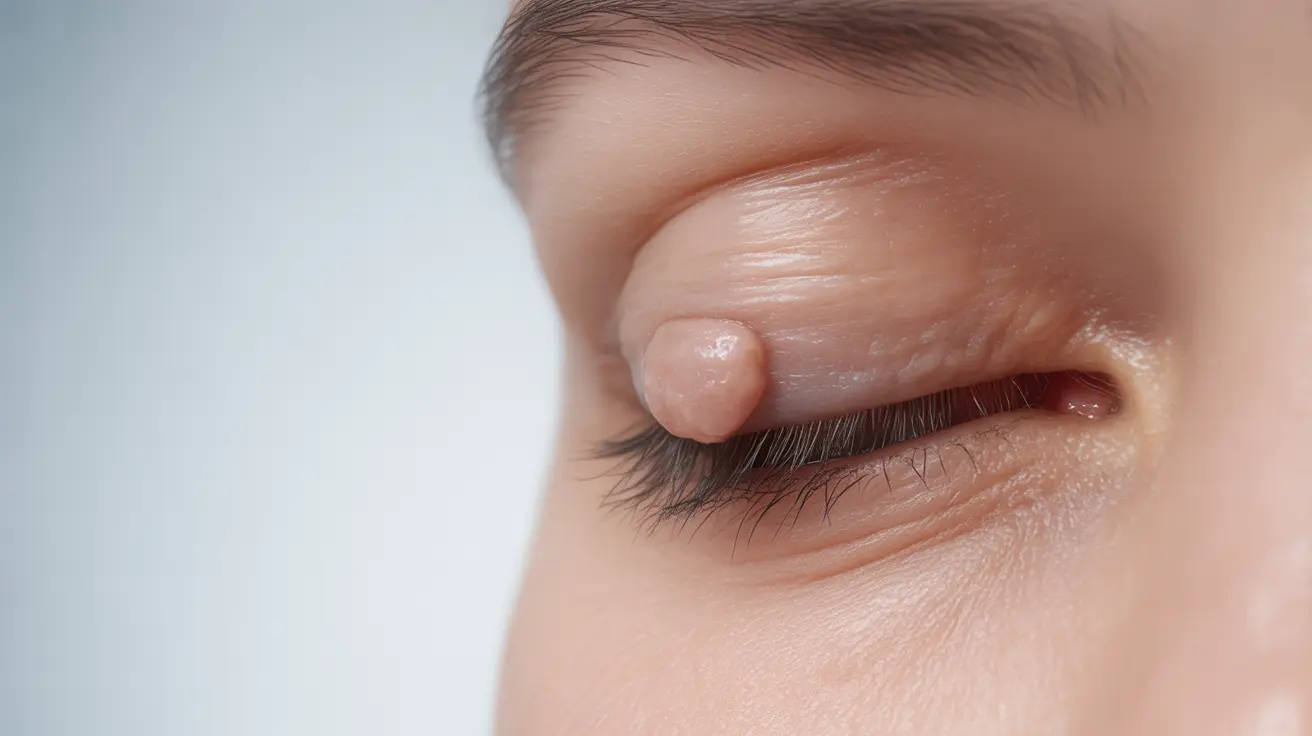Skin tags on the eyelid are common, benign growths that can appear as small, flesh-colored or slightly darker pieces of tissue attached to the delicate skin around your eyes. While these harmless growths rarely cause medical concerns, their location on the eyelid can be bothersome and may affect your appearance or comfort.
If you've noticed a small, soft growth on your eyelid, understanding what it is and knowing your treatment options can help you make informed decisions about your eye health. This comprehensive guide will explore the causes, treatment options, and when to seek professional medical attention.
What Are Eyelid Skin Tags?
Eyelid skin tags, medically known as acrochordons, are soft, painless growths that develop from excess skin. They typically appear as small, raised pieces of tissue connected to the eyelid by a narrow stalk or base. These growths can vary in size but are usually only a few millimeters in diameter.
Common Causes and Risk Factors
Several factors can contribute to the development of skin tags on your eyelids:
- Friction from rubbing eyes
- Genetics and family history
- Hormonal changes
- Age (more common in middle-aged and older adults)
- Obesity
- Pregnancy
- Diabetes
Treatment Options for Eyelid Skin Tags
Due to their sensitive location near the eye, professional medical treatment is strongly recommended for eyelid skin tags. Common removal methods include:
Professional Removal Methods
Medical professionals may use several techniques to remove eyelid skin tags safely:
- Surgical excision with sterile instruments
- Cryotherapy (freezing)
- Electrocauterization
- Laser removal
What to Expect During Treatment
Professional removal typically involves:
- Local anesthetic to ensure comfort
- Quick procedure (usually under 30 minutes)
- Minimal recovery time
- Professional aftercare instructions
When to See a Healthcare Provider
Certain situations warrant immediate medical attention:
- Rapid growth or changes in appearance
- Bleeding or irritation
- Vision interference
- Pain or discomfort
- Changes in color or texture
- Multiple tags appearing suddenly
Prevention and Risk Reduction
While you can't always prevent skin tags, certain lifestyle changes may help reduce their occurrence:
- Maintaining a healthy weight
- Practicing good eye hygiene
- Avoiding eye rubbing
- Managing underlying health conditions
- Keeping the eye area clean and moisturized
Frequently Asked Questions
What are the common causes of skin tags on the eyelid?
Skin tags on the eyelid commonly develop due to friction, hormonal changes, genetics, obesity, and aging. They can also be more prevalent in people with diabetes or during pregnancy.
How are skin tags on the eyelid typically treated or removed?
Eyelid skin tags are best treated by medical professionals using methods such as surgical excision, cryotherapy, electrocauterization, or laser removal. Due to their proximity to the eye, at-home removal attempts should be avoided.
What are the benefits and risks of removing a skin tag on the eyelid?
Benefits include improved appearance, reduced irritation, and prevention of potential complications. Risks, while minimal when performed by a professional, may include slight scarring, temporary discomfort, and rare complications such as infection.
Can skin tags on the eyelid be prevented, and what lifestyle changes can help reduce the risk?
While complete prevention isn't always possible, maintaining a healthy weight, practicing good eye hygiene, avoiding eye rubbing, and managing underlying health conditions can help reduce the risk of developing skin tags.
What signs or symptoms should prompt a visit to a healthcare provider for a skin tag on the eyelid?
Seek medical attention if you notice rapid growth, changes in appearance, bleeding, irritation, vision interference, pain, or discomfort. Multiple tags appearing suddenly should also be evaluated by a healthcare provider.




